Surprising Tech Trends in WordPress and Beyond
As you likely know, WordPress software powers 46% of all websites on the Internet. I thought it would be fun to dive a bit deeper and note some trends that affect the WP community.
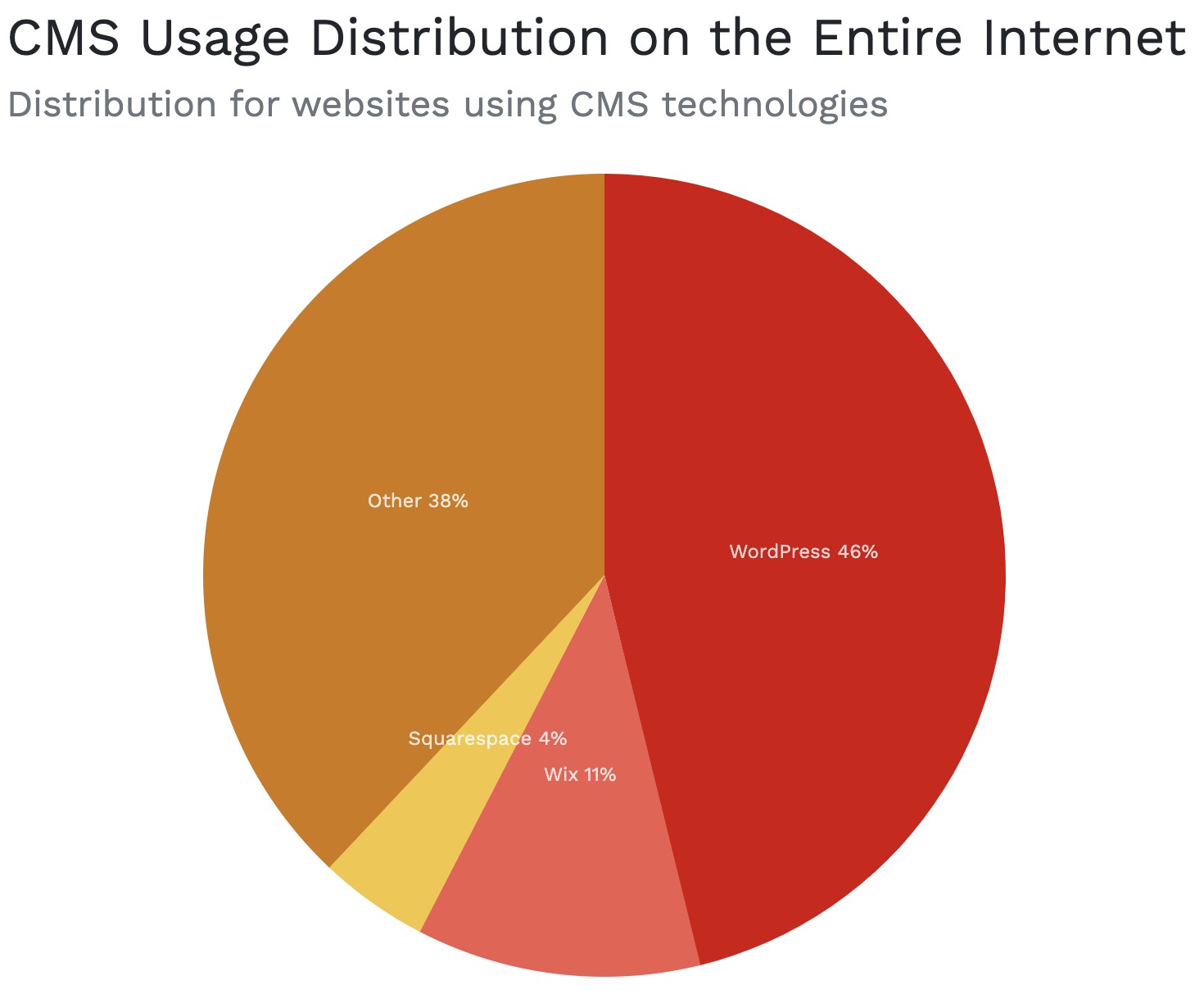
WordPress usage remains dominant and steady
Since its founding in 2003, WordPress usage has risen steadily and consistently:
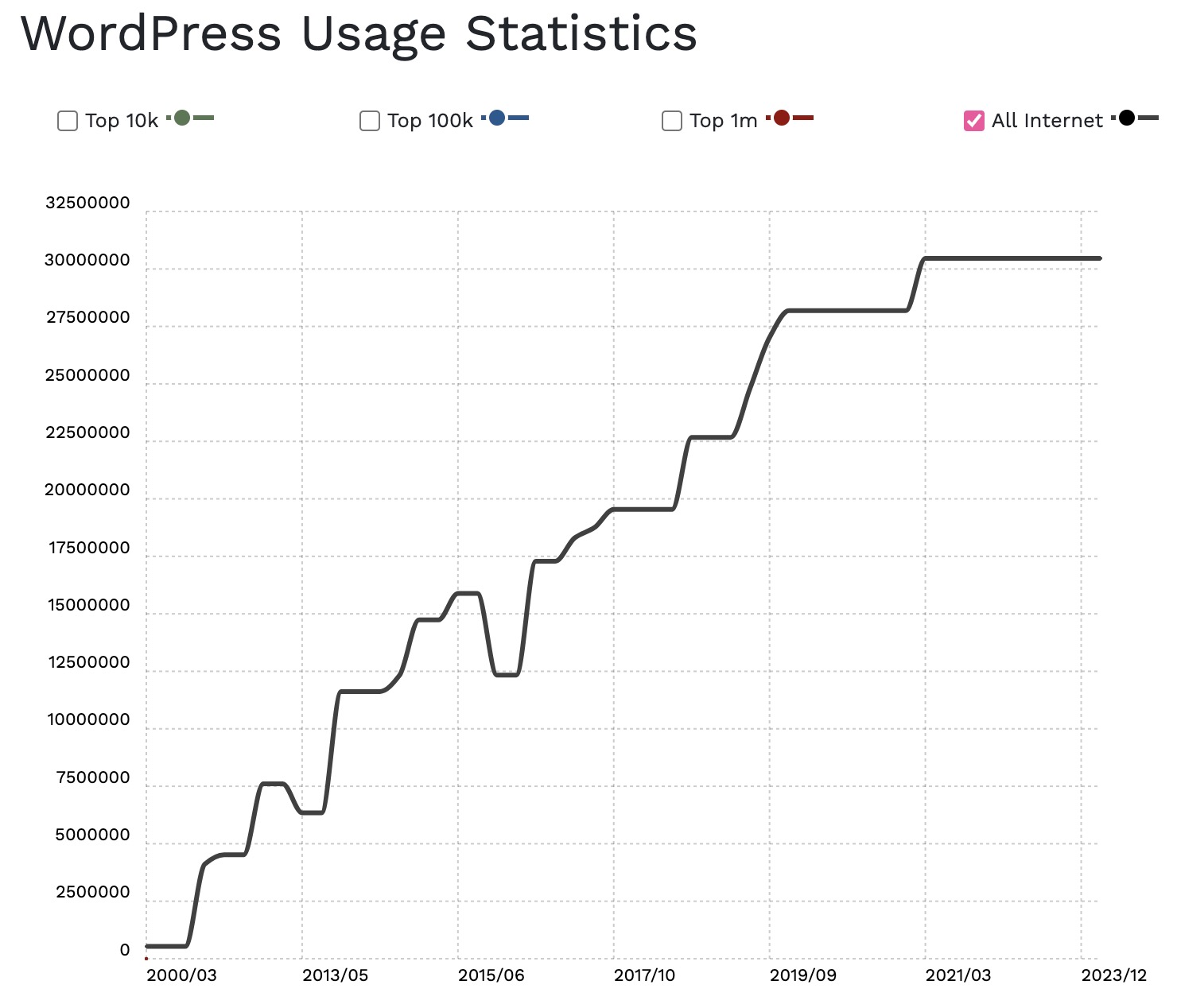
WP consultants who are old enough will recall that Drupal and Joomla commanded a large share of the market early on – not anymore.
Both are down considerably since their peaks around 2015:
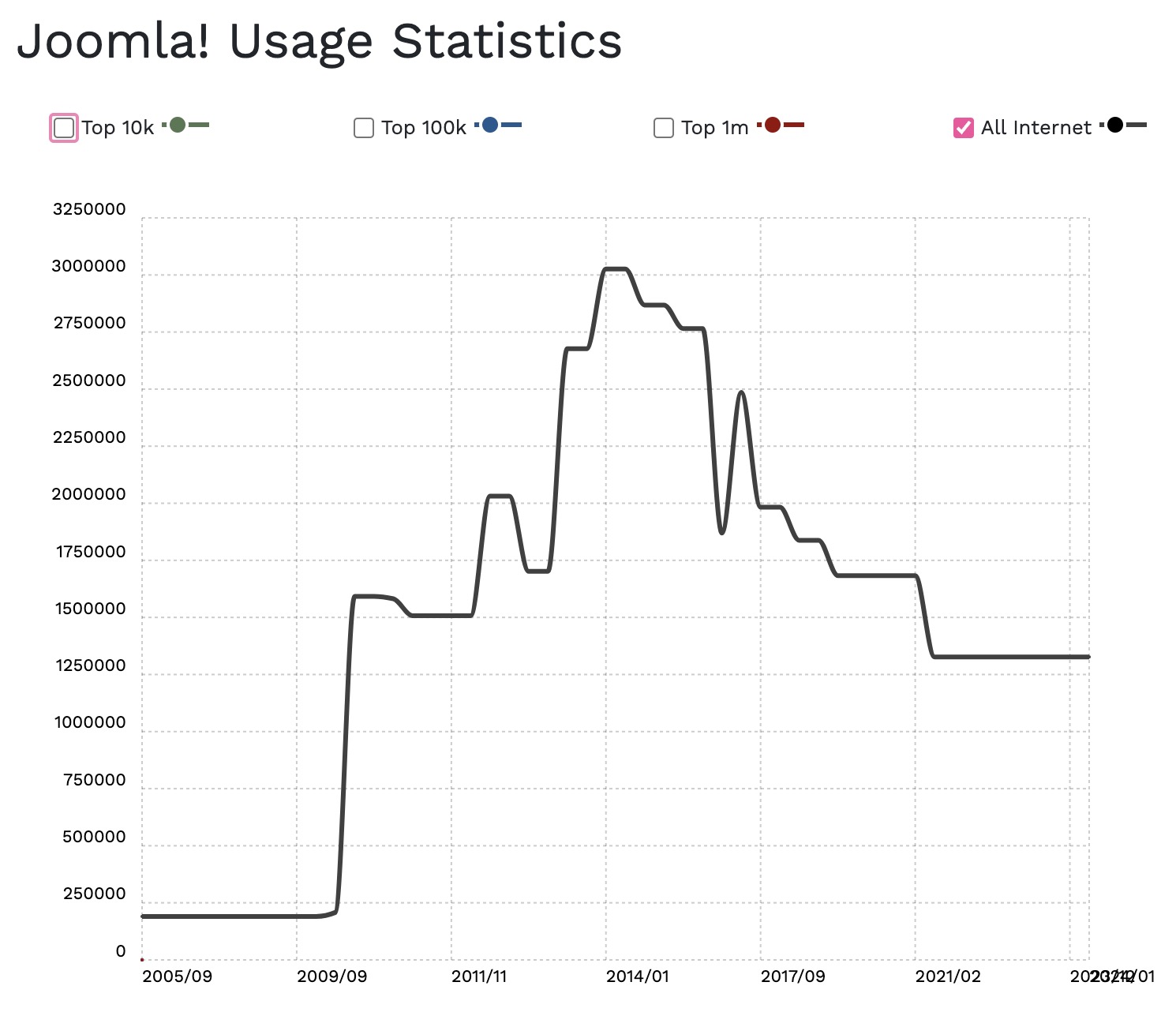

As we’ll see below, 3-out-of-every-4 WP installs are potentially insecure due to antiquated versions of PHP running on the server.
Additionally, while almost 20% of all WP sites are running a very old version of WP, the good news is that old versions of WP are still patched for security vulnerabilities.
Antiquated WordPress Core Installs
The large size of the WP userbase means that there will be stragglers who refuse to upgrade their tech stacks (sometimes for good reasons, perhaps).
Antiquated PHP
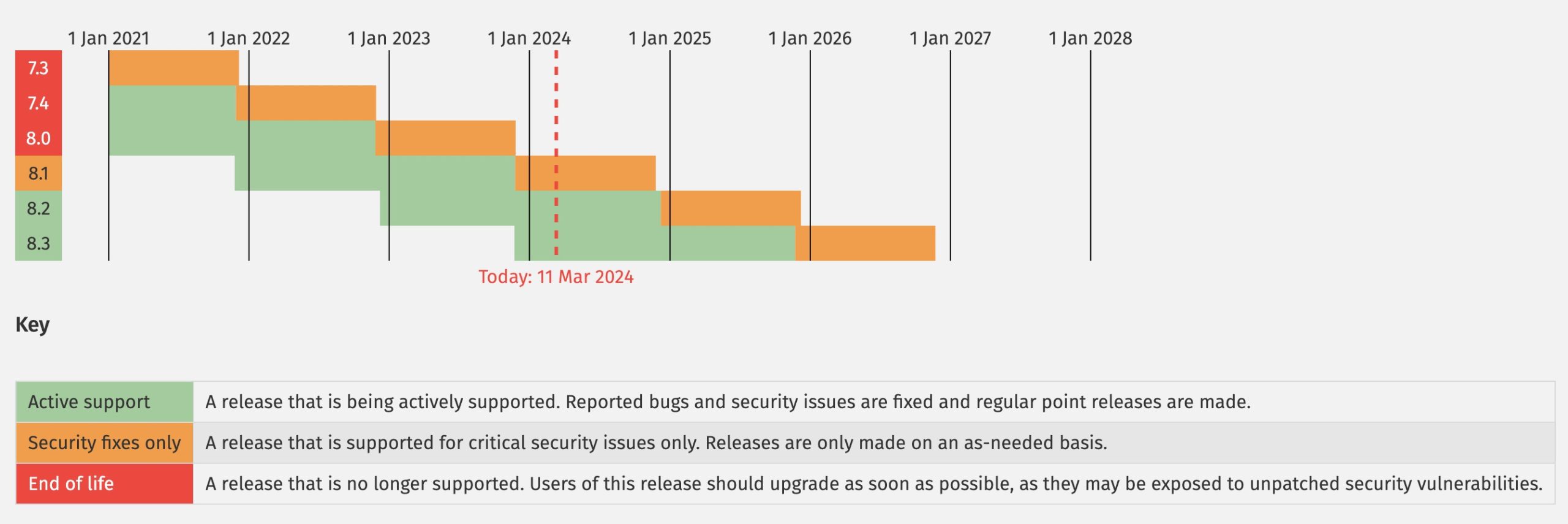
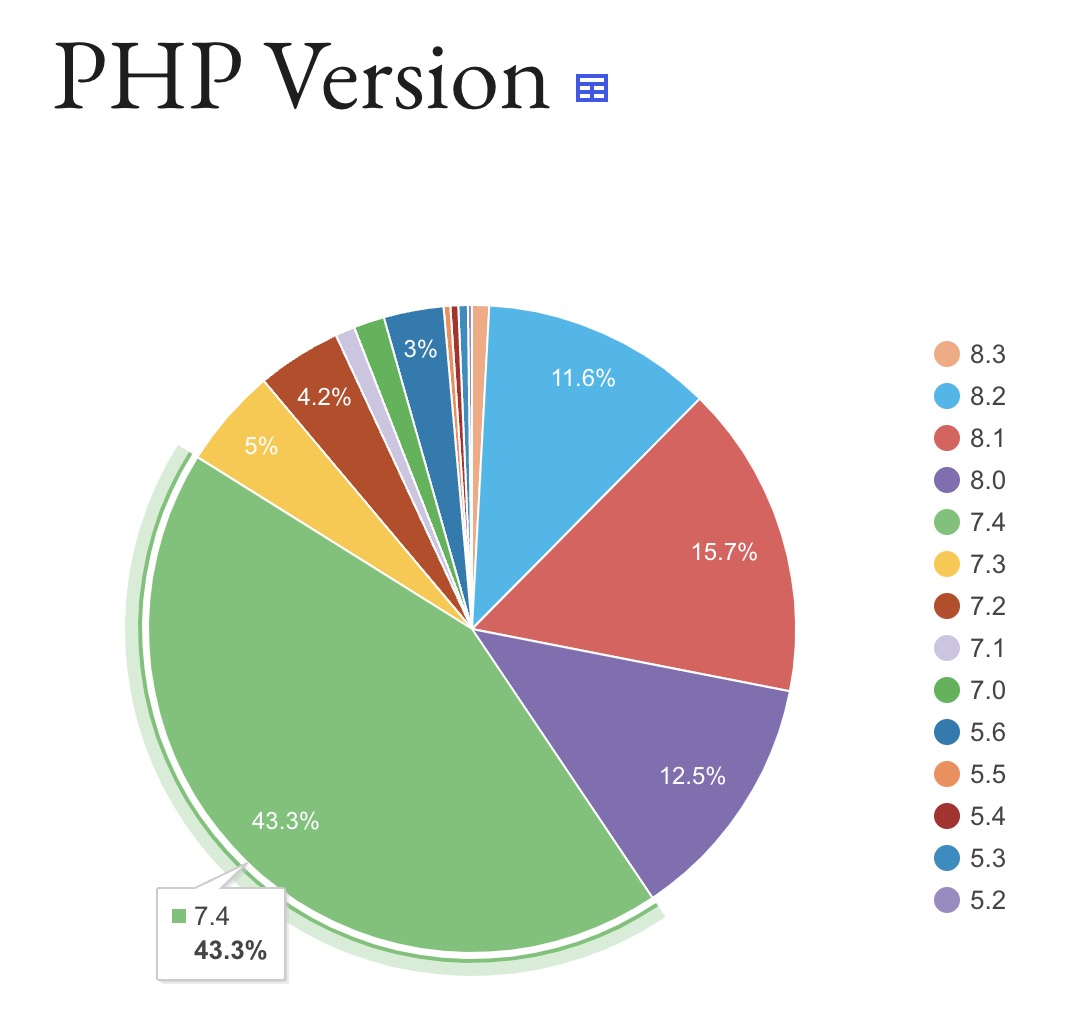
jQuery is still riding high!
What’s not to love about jQuery?! You can quickly write code that does all sorts of fancy animations and other things without knowing a whole lot about javascript.
It’s not clear how much of this high jQuery usage is due to tech debt vs new code, but what is clear is that jQuery is one of the most-used languages in WordPress:
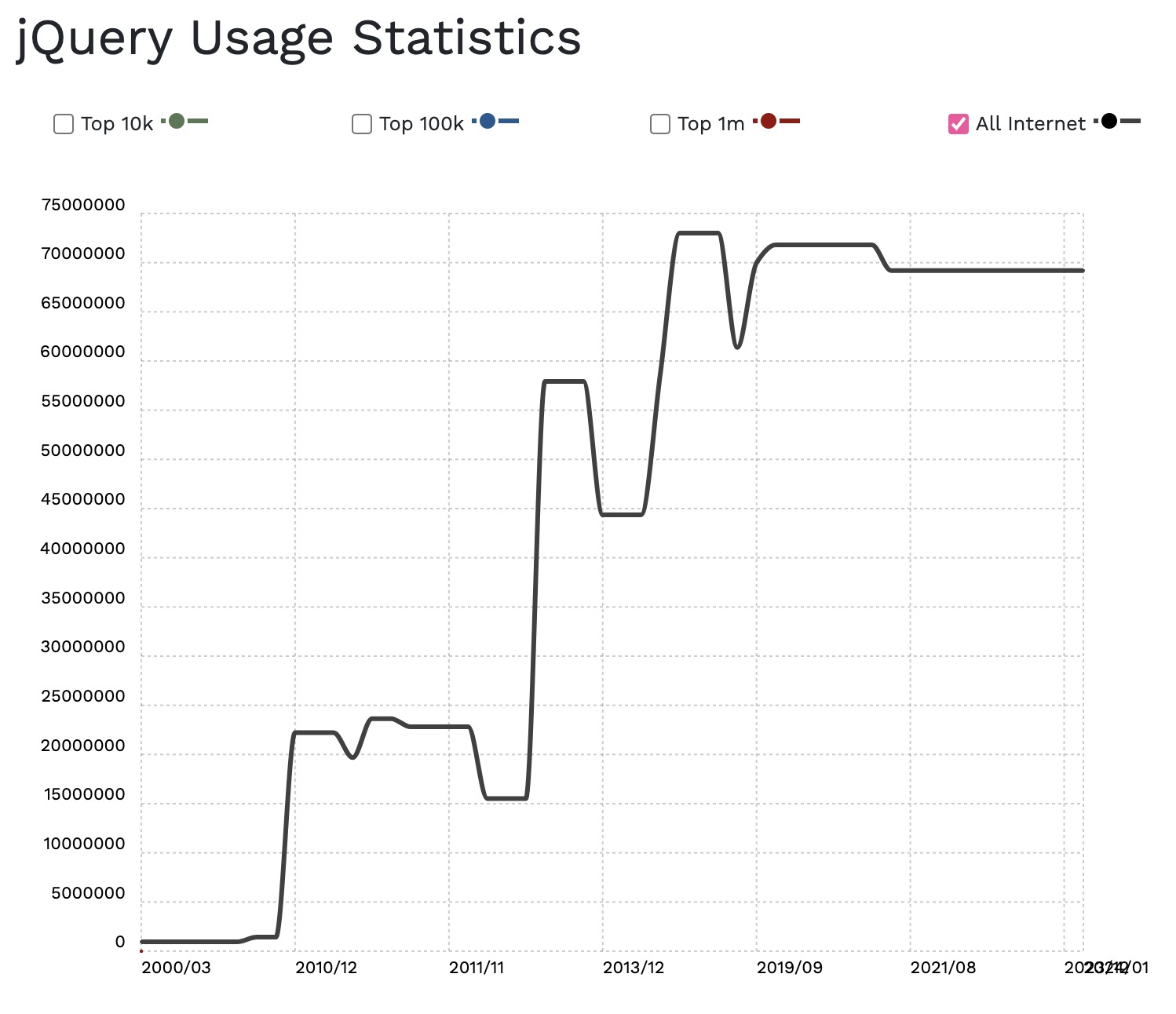
React usage is up for the top 1 million sites.
Ever since Gutenberg’s release in 2018, the React library has seen a leap in usage (FYI: Gutenberg blocks require React):

WordPress’ competitors are rocking!
Perhaps you’ve heard of two of WP’s main competitors: Squarespace and Wix. Well, they are both doing quite well:
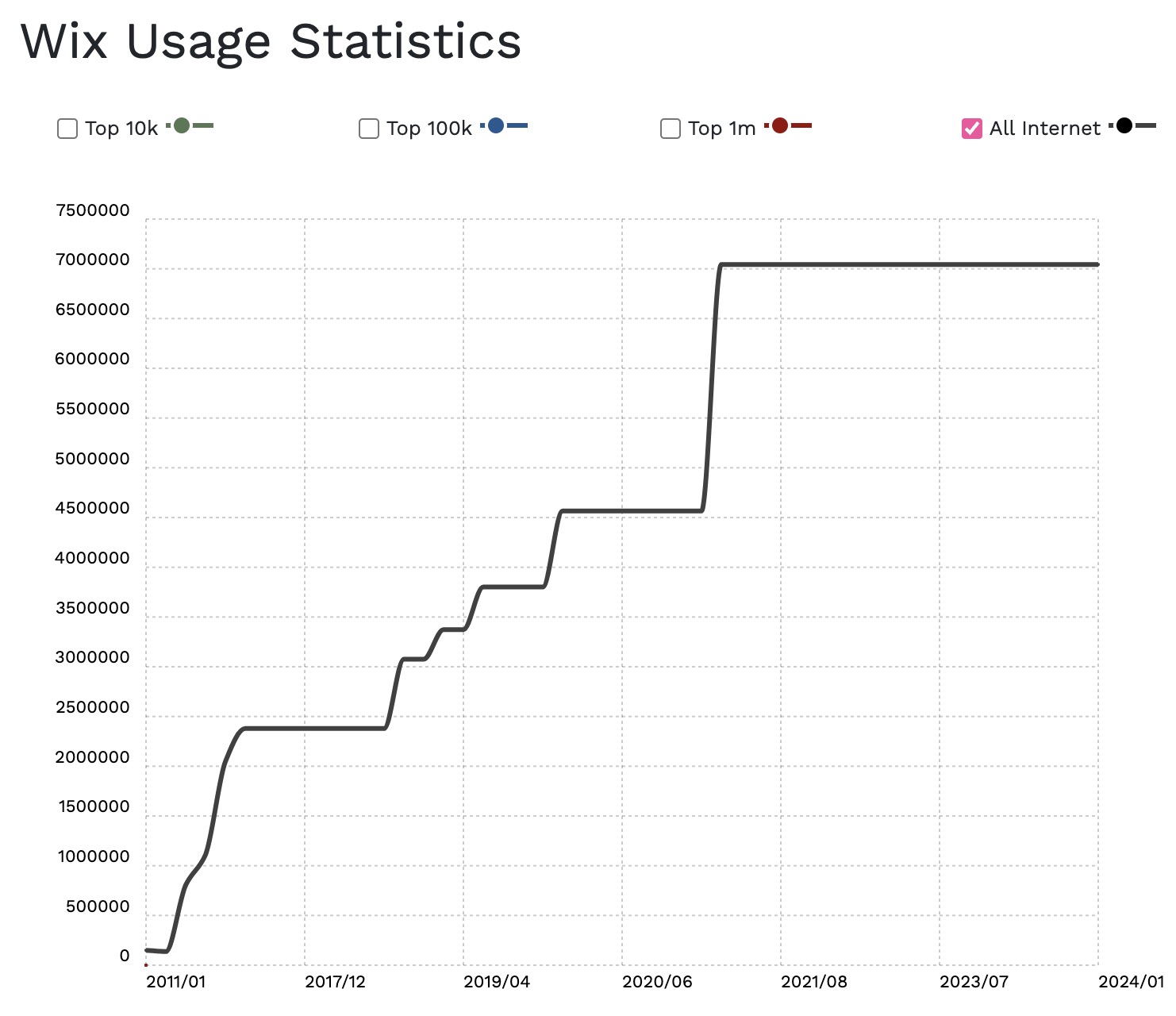
Squarespace is up (mostly):
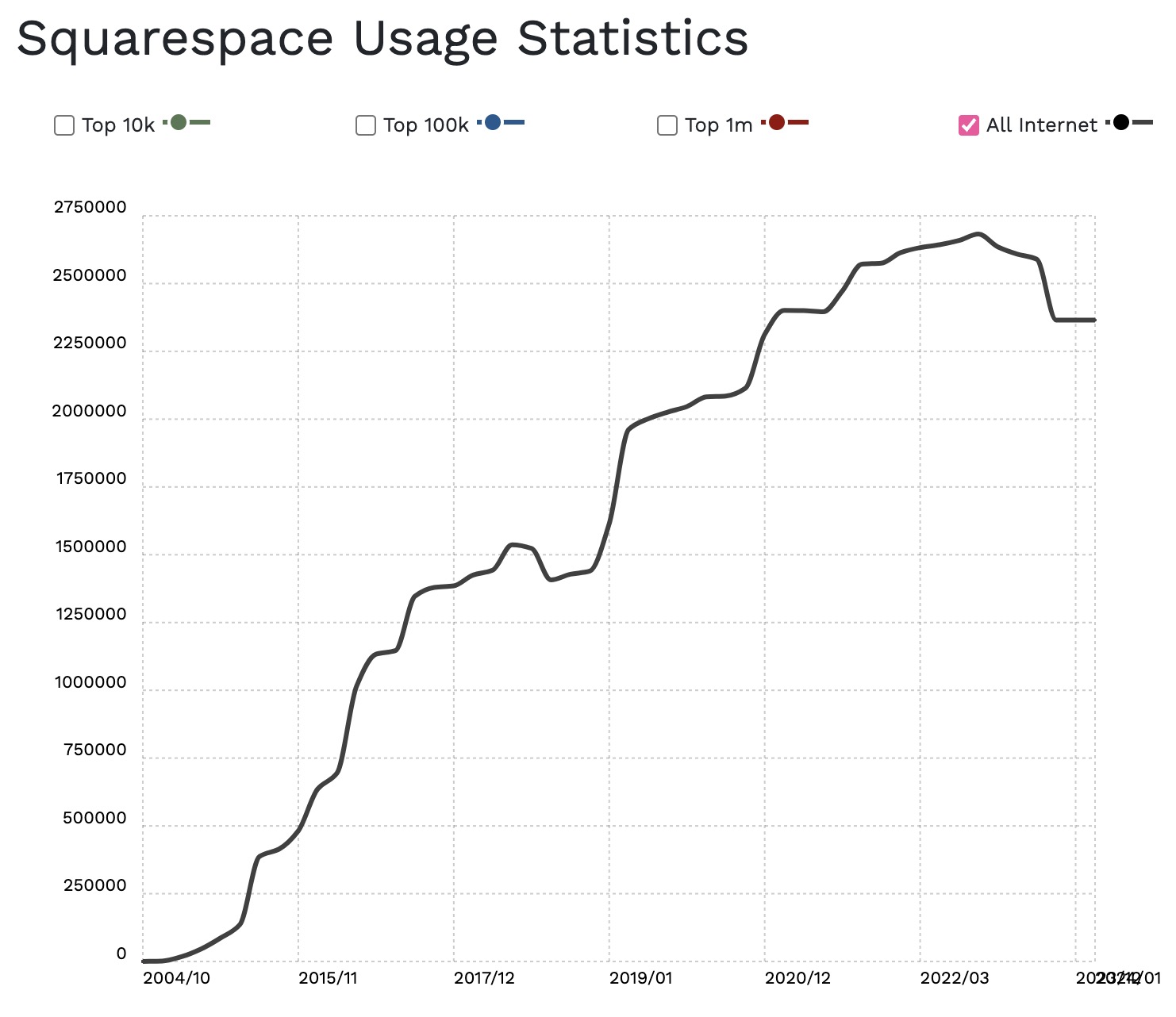
Hubspot webpage builder usage has gone down a bit recently but still maintains a notable market share:

What about e-commerce?
WooCommerce and Shopify are in a head-to-head battle for the #1 e-commerce platform.
According to BuiltWith.com, there are around 2.75 million websites using a WooCommerce checkout page (there are, apparently, also many Woo sites not using the standard checkout and/or any checkout at all).
Similarly, there are around 2.75 million Shopify sites.
Shopify usage remains high but is decreasing since 2022.

WooCommerce e-commerce is trending similar to Shopify:
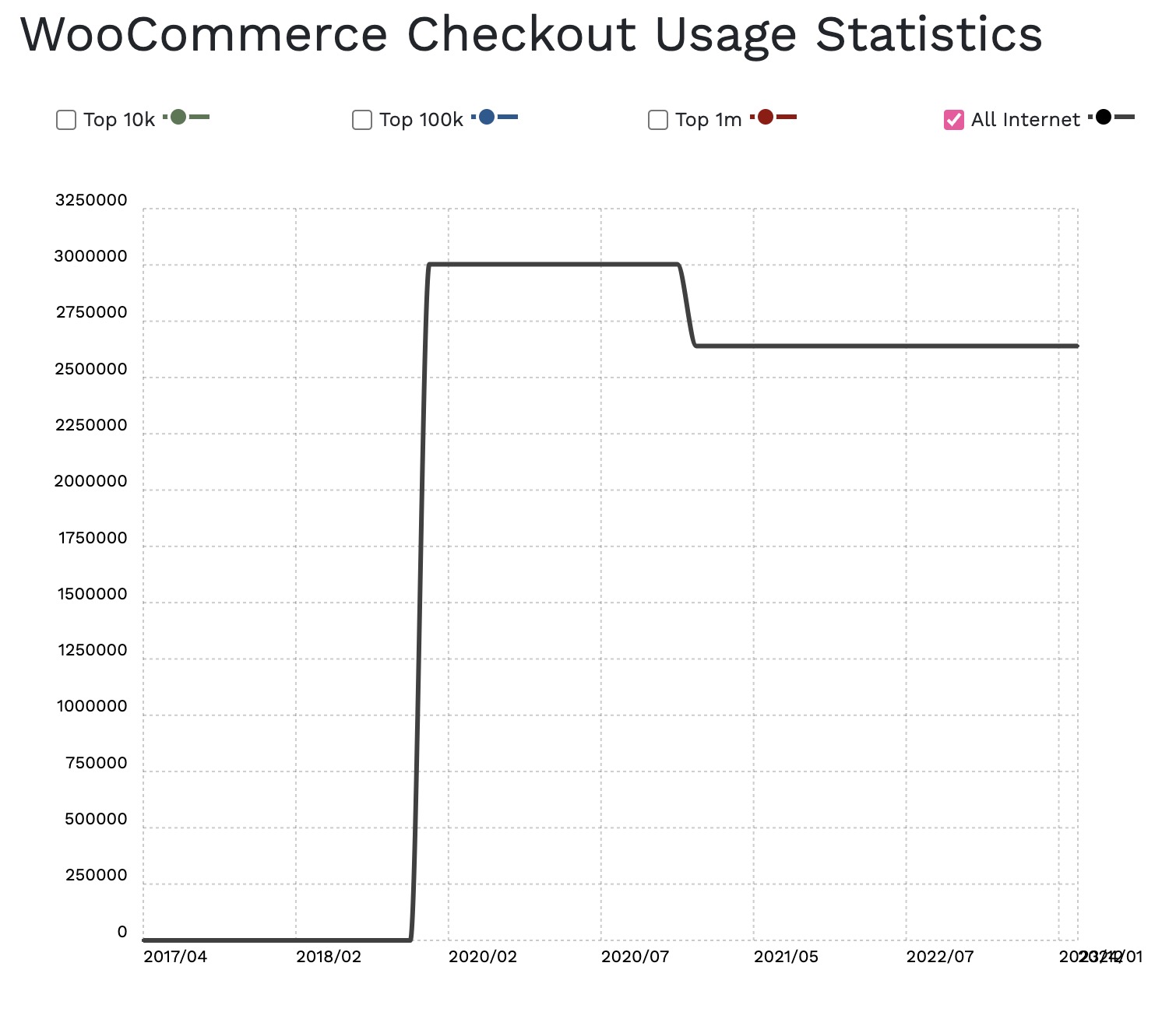
Mailchimp is down; Zoho Mail and Google Business are up.
Mailchimp’s usage downfall seems to coincide with its acquisition by Intuit in 2021:

Zoho Mail, meanwhile, seems to be consistently surprising users with its low-cost/high-feature business model (think of Zoho as the “affordable shared hosting” version of Google Business).
Zoho Mail usage is up:
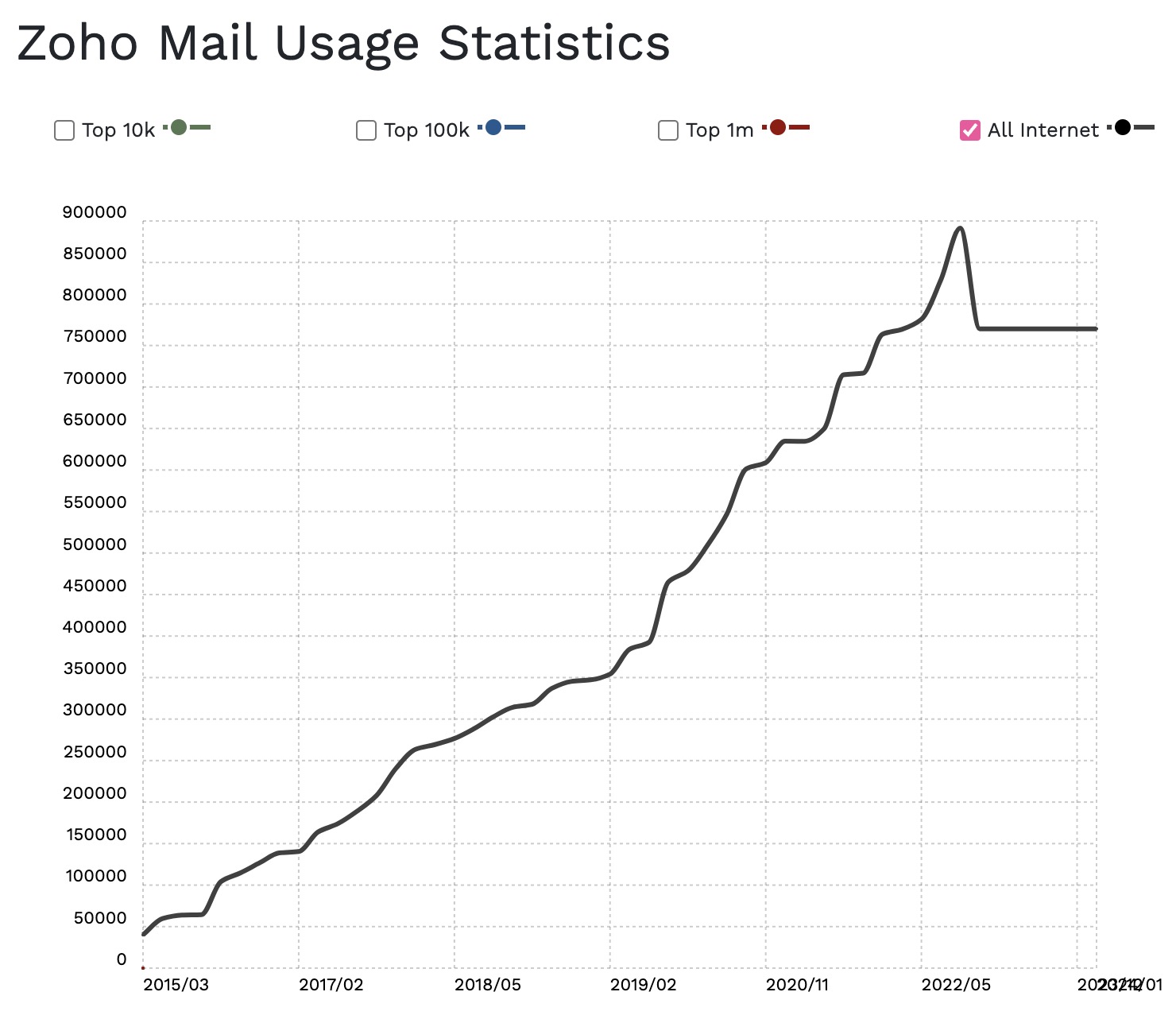
Meanwhile, the old guard isn’t sleeping. Google Apps for Business is up up up:
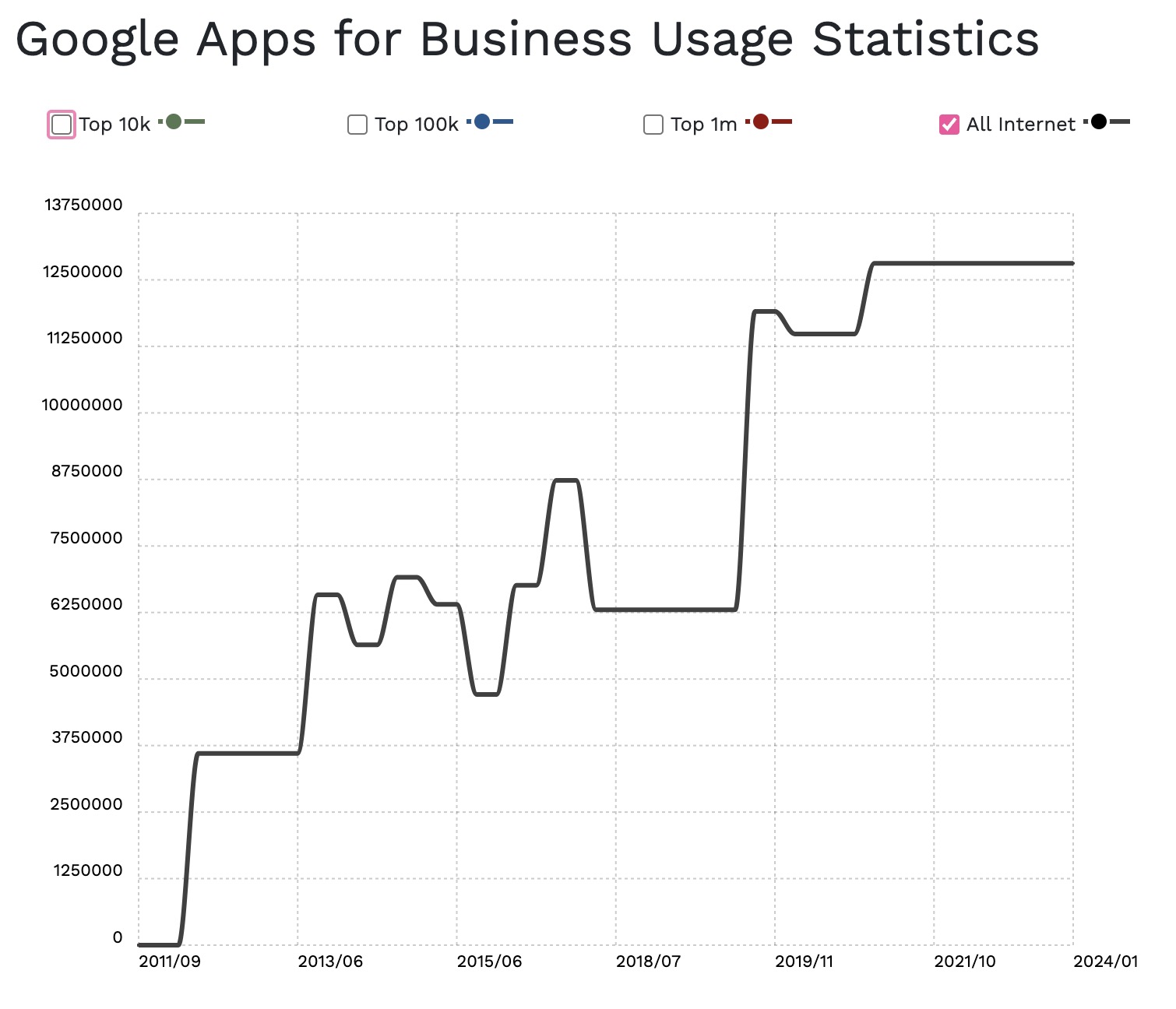
How is our old friend, PHP, doing?
PHP usage has been down considerably for 6 years but still powers around 35 million websites, most of which are, presumably, WP sites.

About the Data
I pulled this data from reliable Internet sources and linked those sources above. However, as with all data sets, it’s possible these sources are either incorrect or that the data doesn’t tell the full story.
If you notice anything in my data sets above that needs to be corrected, let me know in the comments.
Similarly, if you find alternate data sources that tell additional stories, please let us know in the comments.
What do you think?
Similar to last week’s Tavern post about WP.org theme usage, data found on this page is likely best used as a fun conversation starter rather than a place to draw firm conclusions about anything. What is your reaction to this data? Did anything surprise you? Let me know in the comments below.













Leave a Comment